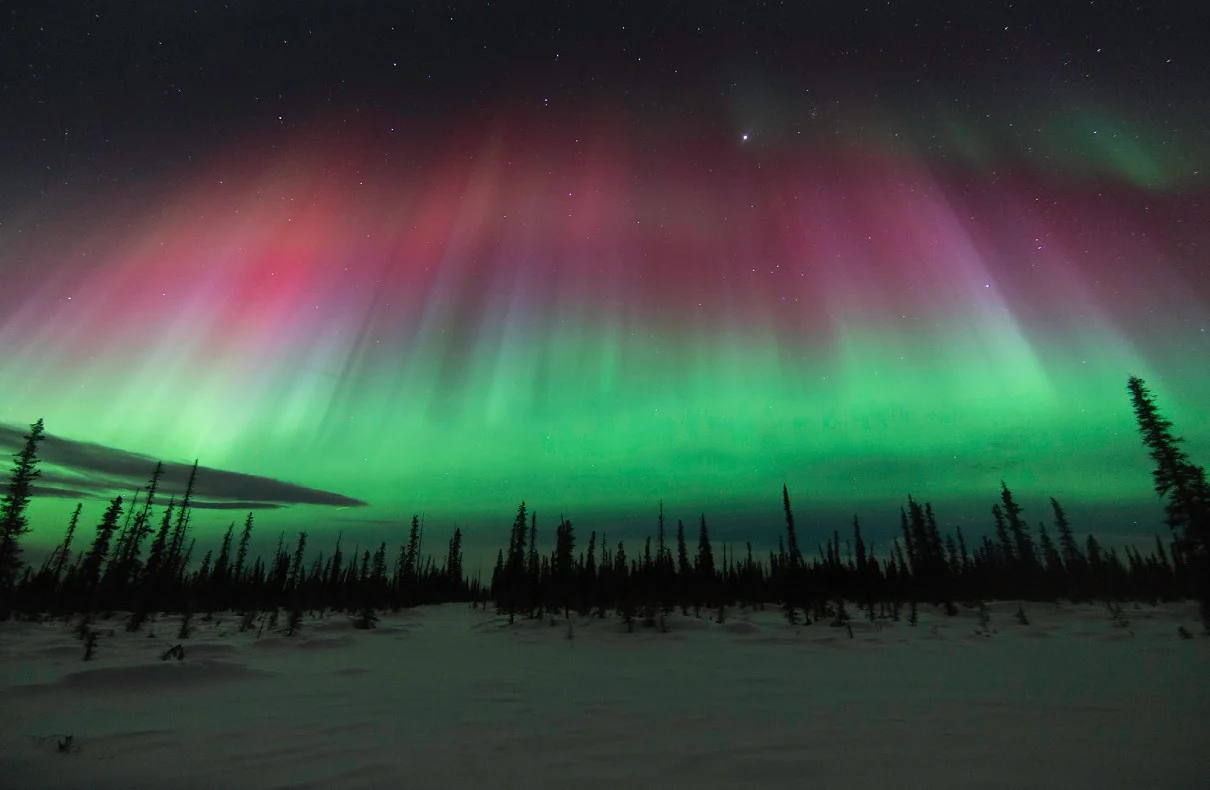
The solar storm, initially categorized as a minor G1 or G2 storm, was later escalated to a severe G4 storm due to an unexpected solar eruption. This upgrade was reported by the New York Post and came as a surprise to many.
“The storm was originally rated as a minor G1 or G2 storm on the National Oceanic and Atmospheric Administration’s five-point scale but was later upgraded to a G4 storm.“
A G1 rating is usually responsible for the common auroras seen over Alaska and Canada. However, under favorable conditions, a G3 storm can produce auroras visible as far south as Washington, Wisconsin, and New York. According to Fox Weather, the current G4 storm, expected to last until Monday, could potentially make the northern lights visible as far south as Alabama and northern California.
The visibility of the northern lights in the southern region largely depends on the cloud coverage. Despite the storm’s intensity, a thick cloud cover may obstruct the view, allowing only a faint light to be visible late Sunday into Monday.
Based on current forecasts, it seems more probable that the lights will be seen as far south as northern Illinois and central Iowa.
While the solar storm is not expected to have any adverse effects, NOAA has indicated a heightened possibility of effects on satellite operations or issues with GPS.
“There is an increased possibility of effects on satellite operations or issues with GPS.”
The term ‘aurora’ is used to describe the lights produced when electrons from space flow towards Earth’s magnetic field and collide with atoms and molecules of the atmosphere. This phenomenon, centered around Earth’s magnetic pole, creates lights akin to those produced by electrons flowing through gas in a neon light.
In the northern hemisphere, these lights are referred to as the Northern Lights or Aurora Borealis while in the southern hemisphere, they are known as the Southern Lights. Coronal Mass Ejections, such as the one that occurred this week, produce the most active and vibrant auroras.
- Northern Hemisphere: Northern Lights or Aurora Borealis
- Southern Hemisphere: Southern Lights
Image Source – cnbc
